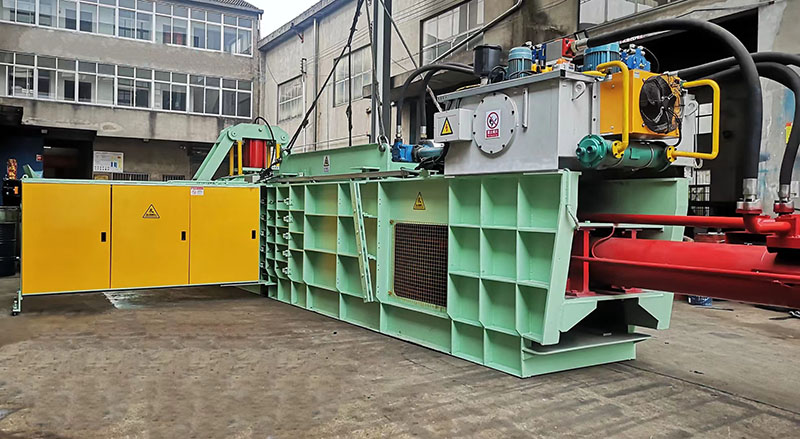The world of plastics isn’t a monolithic one. Common materials like PET (for mineral water and beverage bottles), HDPE (for milk and shampoo bottles), and PP each have distinct physical properties. What performance requirements does this place on a plastic bottle baler? A high-quality plastic bottle baler should be able to efficiently handle these mixed or sorted bottles, demonstrating strong adaptability and stability to ensure high-quality final bales.
While the operating principle is compression, bottle shapes differ depending on the material, and their response to compression and the resulting bale shape may vary. PET bottles are hard and elastic, while HDPE bottles are generally softer but resilient. A high-performance baler’s hydraulic system can provide steady, powerful pressure, sufficient to compress these diverse bottles to their full potential. The key lies in consistent and stable pressure, ensuring that bottles of any material fully deform, expel air, and securely fit together with surrounding bottles during the compression stroke, forming a solid, integrated package.
From a functional perspective, a general-purpose plastic bottle baler, when handling mixed bottles, strives for high density and stability in the final bale. High density ensures economical transportation, while high stability ensures that the bales will not loosen during subsequent lifting, stacking, and transportation. For businesses engaged in social recycling, processing mixed bottles is common, making machine versatility and reliability crucial. Recyclers specializing in a single material (such as virgin PET bottles) may be more concerned with whether the machine can meet the maximum density standards required by the recycling plant for that specific material.

When selecting a plastic bottle baler, do users need to conduct specific testing or considerations specific to the primary bottle material they process? Will a machine claiming to handle mixed bottles compromise the quality of the final bales due to the mixed material? Are there subtle differences in compression ratios and required pressures for different materials, and do these differences influence the selection of machine tonnage and bin size? Understanding the interaction between machine and material is crucial to ensuring the effectiveness of your investment.
Nick Baler’s plastic and PET bottle balers provide an efficient, cost-effective solution for compacting plastic waste, including PET bottles, plastic film, HDPE containers, and shrink wrap. Designed for waste management facilities, recycling plants, and plastic manufacturers, these balers help reduce plastic waste volume by over 80%, optimize storage, and improve transportation efficiency.With options ranging from manual to fully automatic models, Nick Baler’s machines enhance waste processing speed, minimize labor costs, and increase operational efficiency for industries handling large-scale plastic waste recycling.
Industries That Benefit from PET & Plastic Balers
Recycling & Waste Management – Compressing plastic waste, bottles, and packaging for recycling.
Manufacturing & Packaging – Reducing waste from production and post-consumer plastic materials.
Beverage & Food Industry – Managing PET bottles, plastic containers, and shrink wrap efficiently.
Retail & Distribution Centers – Baling excess plastic film, packaging waste, and used containers.
https://www.nkbaler.com
Email:Sales@nkbaler.com
WhatsApp:+86 15021631102
Post time: Oct-14-2025